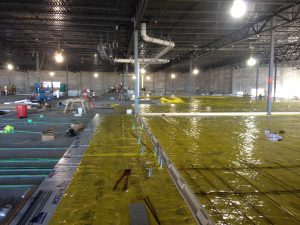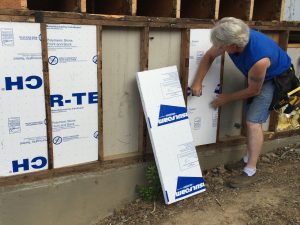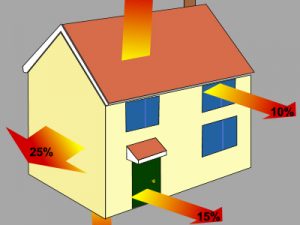Up to 25% heat loss occurs through the basements of a home.
 When building a new home, extra money spent on adding insulation to your basement walls during the construction phase will save you money year after year and can help homeowners from future increases in energy prices, especially if you live in climate zone 3 or anywhere colder. A properly insulated basement can save you money on heating and provide a dry, comfortable living space. Insulated walls are less susceptible to condensation and mold… this means that insulated basements stay drier and smell better than uninsulated basements.
When building a new home, extra money spent on adding insulation to your basement walls during the construction phase will save you money year after year and can help homeowners from future increases in energy prices, especially if you live in climate zone 3 or anywhere colder. A properly insulated basement can save you money on heating and provide a dry, comfortable living space. Insulated walls are less susceptible to condensation and mold… this means that insulated basements stay drier and smell better than uninsulated basements.
In most cases, a basement with insulation installed on its exterior walls should be considered a conditioned space. Even in a house with an unconditioned basement, the basement is more connected to other living spaces than to the outside, which makes basement wall insulation preferable to ceiling insulation. In fact, up to 25% heat loss occurs through the basements of a home.
Minimizing heat loss due to thermal bridging is also an important consideration when building a new home with energy efficiency in mind. A thermal bridge is an area where there is significantly more heat loss than surrounding areas, e.g. wood stud versus surrounding batt insulation.
Insulfoam’s ENERGY STAR® certified R-Tech insulation is a closed-cell, lightweight and resilient expanded polystyrene (EPS) with advanced polymeric laminate facers. R-Tech is water resistant, will help prevent leaks and will not absorb water should a leak occur. EPS insulation is a great solution for exterior walls as it is resistant to mold growth, insects, and has a stable R-Value as EPS’ thermal properties will remain stable over its entire service life.
 In new construction, adding insulation on the exterior of basement walls will:
In new construction, adding insulation on the exterior of basement walls will:
- Minimize thermal bridging and reduce heat loss through the foundation
- Protect the damp-proof coating from damage during backfilling
- Provide some protection against moisture intrusion
- Make the foundation part of the thermal mass of the conditioned space, thereby reducing interior temperature swings
- Reduce the potential for condensation on surfaces in the basement
- Conserve room area, relative to installing insulation on the interior





